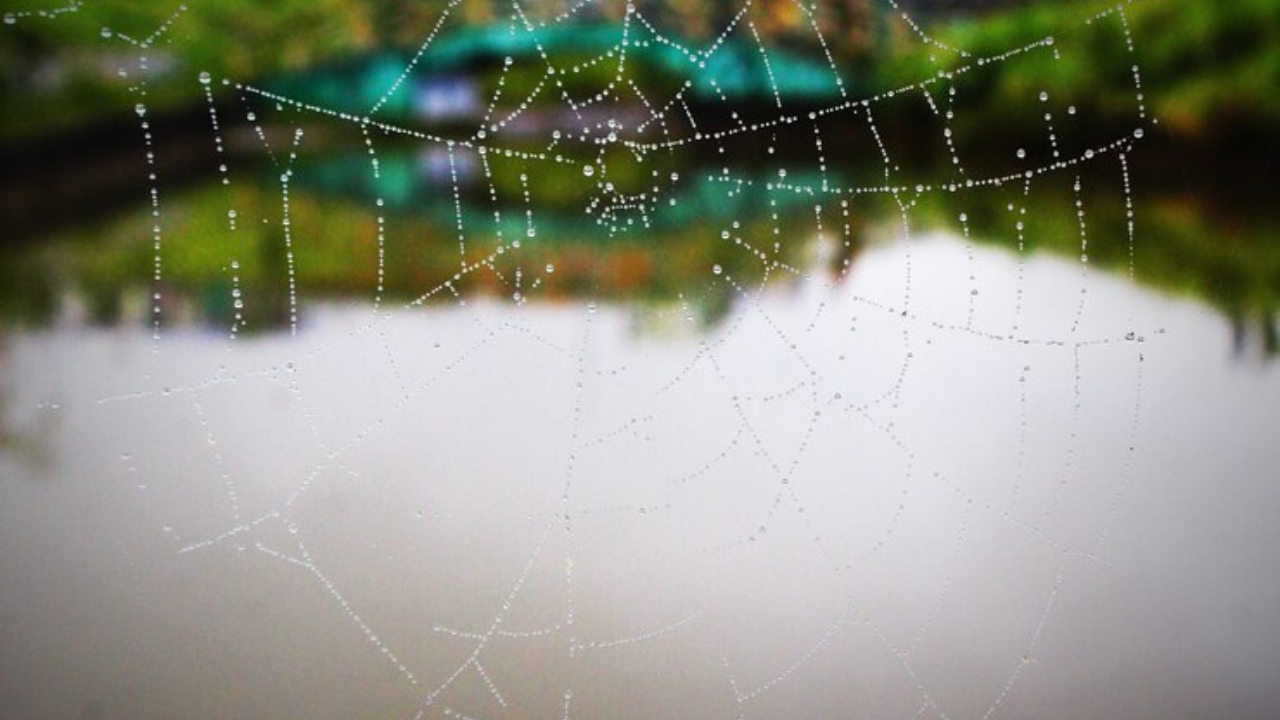In the intricate tapestry of nature, every thread weaves a story. Among these threads lies an extraordinary relationship between lesy and spiderwebs—two seemingly different entities that find harmony in their coexistence. Picture this: a lush forest where tiny lesy dance among glistening silk strands, creating a scene that feels almost magical. But what fuels this enchanting partnership? What benefits do they gain from one another? As we journey through the world of symbiosis, prepare to uncover the remarkable ways these two beings interact and contribute to each other’s survival. This exploration into “lesy and spiderwebs” reveals not only their unique bond but also highlights broader themes within our natural world that deserve attention.
The Definition of Symbiosis in Ecology
Symbiosis is a fascinating concept within ecology that describes the close interactions between different species. These relationships can involve two or more organisms living in close proximity, often leading to significant impacts on their survival and reproduction.
In essence, symbiosis encompasses various forms of partnerships that range from beneficial to harmful. It’s not just about cohabitation; it’s a complex web of interactions where each participant plays a crucial role in the ecosystem’s health.
Understanding these connections helps us appreciate how life thrives through collaboration and interdependence. Symbiotic relationships serve as an essential thread in the fabric of nature, illustrating how diverse organisms work together—or against one another—to navigate challenges and opportunities within their environments.
Types of Symbiotic Relationships
Symbiotic relationships describe the interactions between different species that live closely together. These connections can be intricate and fascinating.
There are three primary types of symbiosis: mutualism, commensalism, and parasitism. Mutualism benefits both parties involved. Commensalism offers advantages to one organism while the other remains unaffected.
Parasitism is a more complex relationship where one organism thrives at the expense of another. Each type plays a crucial role in maintaining ecological balance.
These relationships often evolve over time through adaptation and cooperation. Understanding these dynamics sheds light on how organisms interact with their environment and each other. The beauty of nature lies in its interconnectedness, showcasing diverse strategies for survival across various ecosystems.
Mutualism: The Relationship Between Lesy and Spiderwebs
Mutualism illustrates a fascinating bond between lesy and spiderwebs. Lesy, tiny creatures often found in damp environments, thrive by utilizing the intricate designs of spiderwebs.
These webs offer shelter from predators. The delicate strands create a barrier that keeps lesy safe while they navigate their surroundings.
In return, lesy contribute to the web’s ecosystem. As these little beings traverse the silk threads, they inadvertently help with pest control by consuming small insects caught in the traps.
This relationship highlights nature’s balance—two seemingly different organisms working together for survival.
The synergy between lesy and spiderwebs showcases how interconnected life is within ecosystems. Each player has a role that benefits not only themselves but also their partners, creating a dynamic interplay essential for sustaining biodiversity.
How Lesy Benefits from the Spiderweb
Lesy, often found in lush environments, thrives alongside spiderwebs. These delicate structures create a protective barrier against predators. The intricate designs of spider silk can deter larger animals, allowing Lesy to go about its daily activities with less fear.
Additionally, spiderwebs serve as an excellent source of food for Lesy. Tiny insects caught in the sticky threads become an easy meal. This relationship allows Lesy to conserve energy while still obtaining vital nutrients.
Another advantage comes from the moisture trapped within the web’s fibers. This microhabitat helps maintain humidity levels around Lesy, which is essential for its survival and growth.
By coexisting with spiders, Lesy finds a unique niche that enhances its chances of thriving in diverse ecosystems. It’s a remarkable example of how two seemingly different organisms can work together for mutual benefit.
How Spiderwebs Benefit from Lesy
Spiderwebs have a lot to gain from their relationship with Lesy. These intricate structures are designed for catching prey, but they can also be enhanced by the presence of Lesy.
When Lesy interacts with spiderwebs, it often brings additional nutrients. As these creatures move through and around webs, they might dislodge small insects or organic matter that become trapped. This offers the spiders an unexpected meal.
Moreover, Lesy’s movements can help maintain the web’s integrity. By brushing against strands or vibrating them slightly, they may attract potential prey without damaging the delicate architecture of the web.
This symbiotic dance not only supports spider survival but also fosters a thriving ecosystem within that specific habitat. Each interaction contributes to a more abundant and dynamic environment where both species flourish together.
Examples of Other Symbiotic Relationships in Nature
Nature is full of fascinating symbiotic relationships that highlight the interconnectedness of life. One striking example is the bond between clownfish and sea anemones. Clownfish find shelter within the stinging tentacles of these anemones, gaining protection from predators. In return, they provide nutrients through their waste and help keep the anemone clean.
Another compelling case involves oxpeckers and large mammals like rhinos or buffaloes. These birds feed on parasites found in the animals’ skin, offering relief from pests while enjoying a hearty meal.
Additionally, bees and flowering plants demonstrate mutualism beautifully. As bees collect nectar for food, they inadvertently pollinate flowers, facilitating plant reproduction.
These relationships showcase how diverse interactions contribute to ecosystem balance. Each partnership plays a crucial role in sustaining life on our planet.
The Importance of Studying Symbiosis for a Better Understanding of the Natural World
Studying symbiosis unveils the intricate connections within ecosystems. It highlights how different organisms rely on one another for survival, growth, and adaptation. This interconnectedness fosters biodiversity, which is crucial for a resilient environment.
Understanding these relationships helps scientists predict changes in ecosystems due to environmental stressors or human activity. By observing partnerships like that of lesy and spiderwebs, researchers can gain insights into ecological balance and health.
Moreover, recognizing the value of these interactions informs conservation efforts. Protecting species involved in symbiotic relationships may safeguard entire habitats from degradation.
The more we learn about symbiosis, the better equipped we are to address challenges such as climate change and habitat loss. Each study adds a piece to the puzzle of life on Earth, emphasizing that harmony among species is essential for sustainability.
Conclusion
Lesy and spiderwebs illustrate the complex interconnections in nature. These relationships remind us that survival often hinges on collaboration and mutual benefit. By studying these interactions, we gain insights into ecosystems’ balance and the intricate web of life surrounding us.
Understanding symbiosis enriches our appreciation for biodiversity. The relationship between lesy and spiderwebs serves as a powerful reminder that every organism plays a role in its environment. As researchers continue to explore these dynamics, they uncover new layers of complexity within ecological systems.
The more we learn about such partnerships, the better equipped we are to protect our planet’s diverse species and habitats. Recognizing the importance of each link in nature can inspire conservation efforts and foster respect for all living things. Exploring symbiotic relationships like those between lesy and spiderwebs offers valuable lessons for both ecology enthusiasts and casual observers alike.











